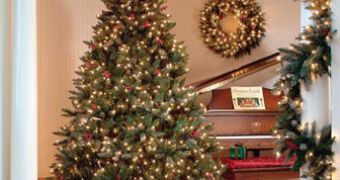Seeing how both conservationists and environmental scientists keep going on and on about how deforestation must be dealt with as soon as possible, it need not come as such a big surprise that most environmentally-conscious people prefer to buy a fake tree for Christmas, rather than cut a real one.
Still, plant biologist Clint Springer now wishes to draw our attention to the fact that, from an environmental standpoint, it may in fact be better to opt for a real tree.
As explained on Newswise, should one only take into consideration the carbon footprint of each of these two types of trees, then it becomes quite obvious that real trees are far more green-oriented than fake ones are.
The reasons for why this should be so are pretty straightforward: real trees simply grow all by themselves, whereas fake trees are manufactured in factories that burn significant amounts of resources.
Moreover, real trees are biodegradable, whereas fake trees are rather tricky when it comes to properly disposing of them, even if one such tree only gets thrown away after many years have passed.
“At this time of year, choosing a real Christmas tree is one way that an average person can make a difference in terms of climate change,” Clint Springer explains.
Furthermore, “A study as recent as 2009 (Ellipsos) concluded that a 7-foot cut tree’s impact on climate is 60 percent less than a 7-foot artificial tree used for six years. So while cut trees are not carbon-neutral, in terms of carbon-use, they are better than artificial trees.”
Besides said concerns about the carbon footprint of real and fake trees, it seems that due consideration must also be given to how each of them can impact on the health of those who happen to find themselves around them.
Thus, Clint Springer draws attention to the fact that real trees are less likely to fuel the manifestation of allergies, and that they do not toy with indoor air quality as much as fake trees do.
“Ultimately, people need to make the choice that makes the most sense for their family, but they should keep in mind that real Christmas trees do not trigger allergic reactions,” this plant biologist says.

 14 DAY TRIAL //
14 DAY TRIAL //